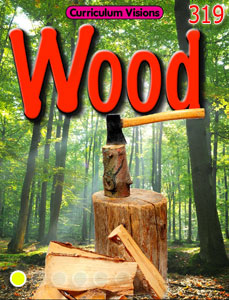Wood. One of the world’s oldest natural materials and showing no signs of being in less demand today than it was in the past despite the huge range of competing materials that are all around us.
To understand why wood has remained a favourite material through the ages, we have to look at its properties and see how varied and useful they are. But we also have to realize that wood is not just a useful material but also a decorative one.
The value of wood
Wood has been used as a material since earliest times. It is relatively soft and easy to work. It can be a source of chemicals as well as of timber and fibre for paper. It is found in almost all parts of the world (except for deserts and polar wastes), and it is, above all, renewable (trees can be grown to replace those cut down). That is what sets it apart from many other resources that we use, such as metal, coal, and oil.
Wood was first used as a simple tool. A broken branch, for example, can be used to scrape at the soil and made into a primitive plough, or it can pry up a rock and move it. Wood can also be made into a simple shelter. But it was quickly realized that wood was far more important than this - it could also be a source of fuel and so provide light and heat for warmth and cooking.
Wood has been such an important resource that in many places it has been almost used up. For example, in the 18th century the British nearly had to stop building ships for their navy because they had run out of oak trees. Even today, when so many other materials are available, the demand for wood is greater than ever, and the number of countries where wood is in real shortage is greater than ever. For example, countries in tropical Africa have used up so much of their wood they are forced to use dung for fuel.







